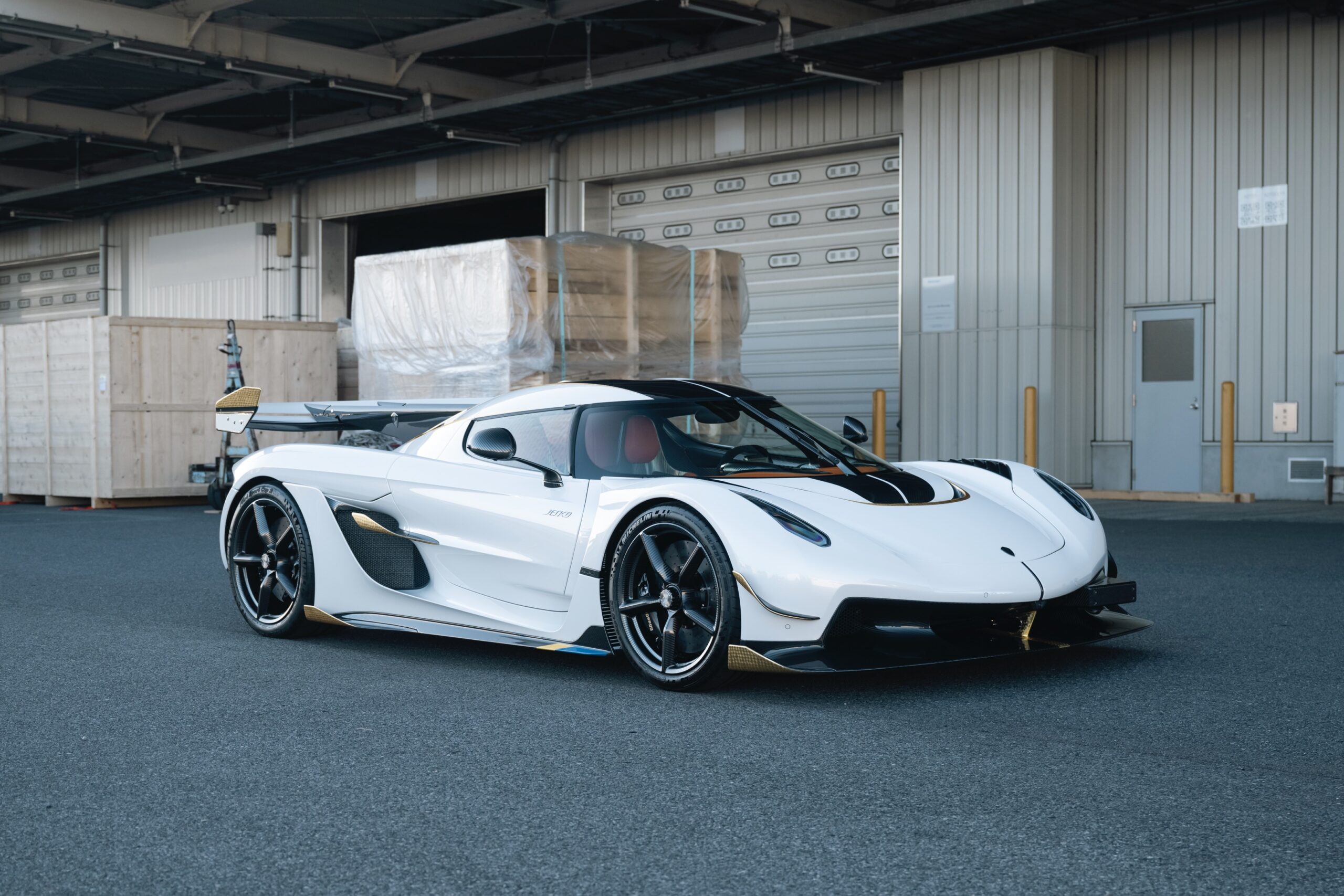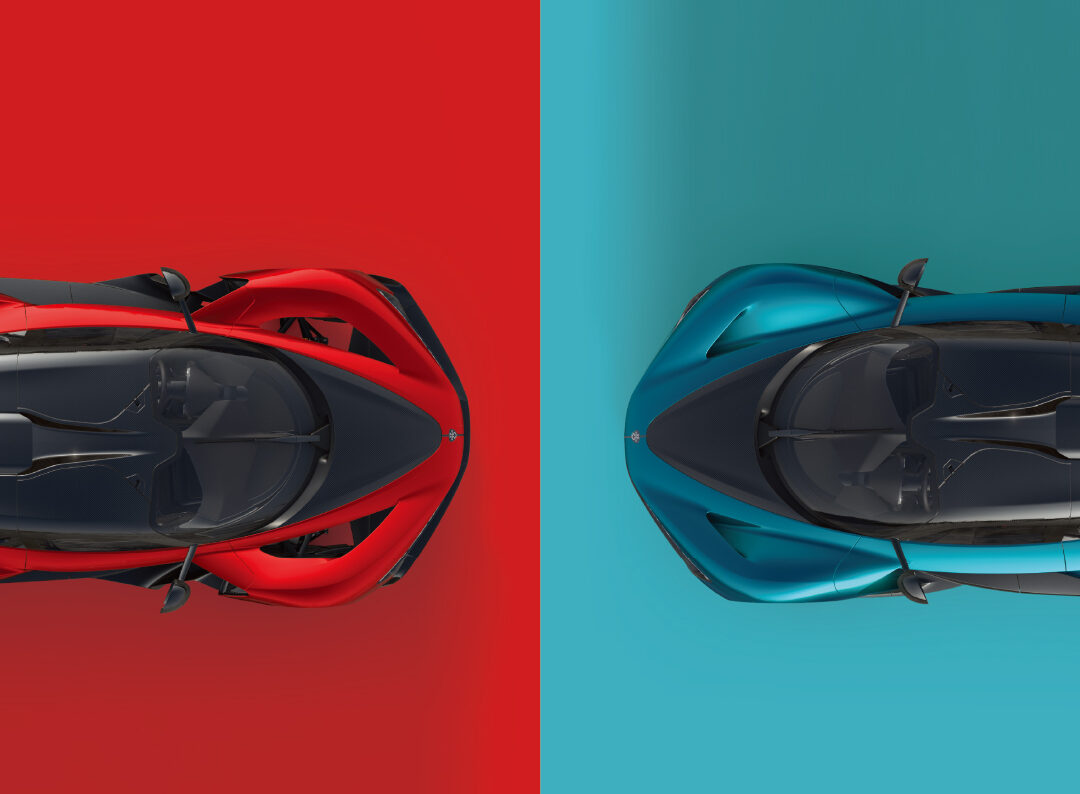McLaren 60th Anniversary Special Blog Part 2 – The Most Interesting McLaren Sold by BINGO
Blogpost
McLaren 60th Anniversary Special Blog Part 2 – The Most Interesting McLaren Sold by BINGO
We recently covered McLaren’s unique history as a sports-car brand and the two special McLaren Ultimate models that we currently have available for negotiation. This time, we will cover a few unique models that we have sold in the past, each one of them having an interesting story behind them. Some of those models have gone on to make headlines all over the internet, with one being fetched for an eye-watering sum.
Here is BINGO’s top 5 list of most interesting McLaren cars we have sold.

5) 2017 McLaren 675LT Spider MSO Carbon Series (1 of 25)
The Carbon Series is a special edition that was exclusive to both the 675LT Coupe and the Spider, with the latter being unveiled at the 2016 Geneva Motor Show. The LT stands for ‘Longtail,’ paying homage to the F1 GTR ‘Longtail’,which you can find out more about later in this blogpost. It was developed by McLaren Special Operations (MSO), its in-house bespoke division, and took inspiration from a special P1 by MSO, which was also unveiled at the 2016 Geneva Motor Show alongside the 675LT Spider. That particular P1 was entirely made out of carbon-fibre wrapped in ‘Lio Blue’ lacquer finish.
With the Carbon Series, the 675LT Spider featured a high-gloss Exposed Carbon Fibre finish, along with 40% more carbon fibre parts than the standard 675LT models. MSO developed those parts exclusively for the Carbon Series, meaning they can’t be retrofitted onto the regular version.
The Carbon Series 675LT still has the same 3.8-litre twin-turbo V8 engine, producing at 666 horsepower with 700 Nm of torque, transmitting power to the rear-wheels through a 7-speed dual clutch transmission. It does 0-60 mph in 2.9 seconds with a 203 MPH top-speed. Only 25 of them were made, and our example had green accents on both the brake callipers and the interior stitching, complementing the Carbon Black Alcantara.

4) Mercedes-Benz SLR McLaren Stirling Moss (48/75)
Mercedes-Benz and McLaren unveiled the SLR McLaren Stirling Moss at the 2009 American International Auto Show, it was the conclusion of the now-iconic SLR McLaren supercar. This version of the SLR paid homage to Sir Stirling Moss, the legendary F1 driver who also won the 1955 Mille Miglia with the Type W196S 300 SLR; the 1000-mile race started at 7:22AM, which was the inspiration for the number 722 on his car. He set a record with a time of 10 hours 7 minutes and 48 seconds.
Despite being based on the standard SLR McLaren, the Stirling Moss featured a completely different body design. The first difference was the lack of roof and windshield for a speedster look, reminiscent of the 1955 300 SLR race car; the coupe version of it, the Uhlenhaut Coupe, recently became the world’s most expensive car.
The same 5.4-litre supercharged M155 SLR V8 engine is under the massive bonnet. It has the same output as the SLR 722 Edition and 722 S, 641 horsepower and 820 Nm of torque, sending all of its power to the rear-wheels via a 5-speed automatic transmission. The Stirling Moss does 0-60 mph in under 3.5 seconds, and can reach a top speed of 217 mph (350km/h).
Only 75 were made before the SLR series bowed out of production in December 2009, and it was eventually replaced by the SLS AMG with gull-wing doors.
This was the 48th Stirling Moss, featuring the Crystal Laurite Silver Metallic exterior finish and a combination of red and black in the interior.

3) 2020 McLaren Senna LM (26/35)
The McLaren Senna LM is a special edition model built by MSO. It was created to commemorate the 25th anniversary of McLaren’s win at the 24 Hours of Le Mans in 1995 with the F1 GTR. A 4.0-litre twin-turbo M840TR V8 engine powers the Senna LM. While it’s the same engine as the standard Senna, the LM version was given a 25 horsepower boost to 814 horsepower, thanks to the new polished and ported cylinder heads. That is the same amount of power as the Senna GTR, and it’s transferred via the same 7-speed dual-clutch gearbox as the standard Senna.
The special additions referencing the F1 GTR’s original features include quad exhaust tips painted in satin-gold, a 24-karat gold heat shield in the engine bay, and OZ aluminium wheels with five-spoke design. MSO’s obsession with attention to detail was evident by the extensive use of gloss carbon, from the front spoiler to the side sills, this also helped reduce weight. Other differences compared to the standard Senna were the lack of clear panels on the doors,and a bespoke interior with Titanium Nitride pedals and LM branding on the entire car.
This example is the 26th of the 35 Senna LMs. Finished in Papaya Orange on both the car’s exterior and interior, it was only one of seven right-hand driveLMs. It had a mileage of around 500km. The previous owner, who had experience driving numerous McLarens at Fuji Speedway, claimed that the Senna LM’s aerodynamics provided great stability due to its high downforce, largely thanks to its swan neck active rear wing.

2) 1997 McLaren F1 GTR Longtail (28R)
The F1 GTR was the racing version of the iconic F1, which was the brainchild of Gordon Murray and Ron Dennis. The F1 GTR made its debut in 1995 in numerous championships, most notably the BPR Global GT Series and All-Japan GT Championship. It went on to become one of the most dominant GT1 race cars, winning championship titles and even a historic win at Le Mans in its first-attempt in 1995, becoming the first car manufacturer since Ferrari in 1949 to pull off such an achievement. Only 28 out of 106 McLaren F1 cars were built in the GTR specification.
Later on,McLaren designed and developed the ‘Longtail’ version as a result of stiffer competition from Porsche with the 911 GT1 and the Mercedes-Benz’s CLK GTR during sportscar racing of the mid-1990s.
This example was chassis 28R, featuring the iconic Gulf livery. Chassis 28R was the final F1 GTR built by McLaren, and one of the 10 F1 GTRs to be converted into a Longtail version. It was previously owned and operated by Team Gulf Davidoff, which competed in the 1997 FIA GT Championship, 7 drivers drove the car that season. Its best race finishes were at the 1000km of Suzuka and the Laguna Seca 3 Hours, scoring 6th place in both races.

1) 1996 McLaren F1 (29/64)
The McLaren F1 was the brainchild of Gordon Murray and Ron Dennis. This car was the first McLaren road car ever. It’s considered to be a technological yet timeless masterpiece.
The F1 was one of the first production cars to feature a carbon fibre monocoque, which was first used in the MP4/1 Formula One car. It was said that it took around 3,000 hours to build a single chassis. Along with carbon fibre, the F1 also features various other special materials, such as kevlar, titanium, magnesium and gold. The use of such materials demonstrated McLaren’s capabilities with groundbreaking innovations.
The F1 was powered by the BMW-built S70/2 engine, a 6.0-litre naturally-aspirated V12 with a 11:1 compression ratio. The car produces 618 horsepower and 650 Nm of torque, sending power to the rear-wheels via a 6-speed manual gearbox. This enabled the F1 to accelerate from 0-60 mph in 3.2 seconds with a top speed of 240.1 mph,a record for a production car at the time. A famous feature is the 24 karat gold used for heat reflection that lines the engine bay
These groundbreaking features were wrapped in an iconic and aerodynamic body designed by Peter Stevens, who was also involved in the decision to have an unusual 3-seat layout, with the driver being positioned in the middle.
Only 106 cars were ever made, 64 being road cars. We had numerous F1 in the past, one of the most famous ones being chassis 029 built in 1996. It featured a stunning one-off Creighton Brown paint r, which was named after a McLaren executive that pitched the idea to make the legendary three-seater supercar. It is complemented by the Light Tan and Brazilian Brown leather interior.
BINGO was the second owner of this unique F1, before it was sold in 2013. It was auctioned at the Gooding & Co. auction in Pebble Beach in 2021, where it fetched an eye-watering US$20,465,000 with less than 240 miles on the odometer. Chassis 029 became the most expensive car auctioned in 2021, and is certainly one of the most memorable cars we’ve had in our collection.




